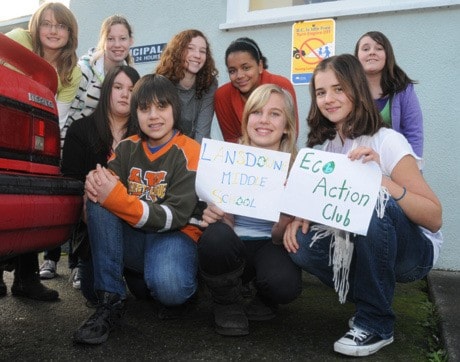Trimming the fat from the Greater Victoria school district’s energy use has become a major priortiy.
Every gigajoule of energy saved by the district can mean double its weight in savings, because the province charges for every gigajoule expended.
The Education Ministry “is taxing us on our carbon footprint, so the more carbon we produce, the more we have to pay,” said Seamus Howley, director of facilities for the school district.
Six years ago, the district started replacing major energy guzzlers like boilers with more efficient models. Temperature controls for schools were upgraded to allow heating and cooling to be scaled back after hours and over the summer.
As the ministry approved seismic upgrades for schools, the district made sure insulated windows were part of the construction.
In all, the energy upgrades have added up to a savings of $250,000 annually – mostly from the district’s utilities bill, Howley said.
“As far as our carbon footprint, we have reduced (it) in the neighbourhood of 2,000 tonnes,” he said. At $25 per tonne that’s another $50,000 of savings annually.
The latter is a savings from the district’s carbon offsets payment, a line added to the budget last year by the Education Ministry in an effort to encourage districts to go carbon neutral.
“I don’t know whether it’s a good thing or a bad thing,” said Tom Ferris, board of education chair. “If you make the reductions, you do save money and you save more than the offsets costs that you incur.”
Ferris added that as long as students are learning about greenhouse gases and sustainable living, there are benefits to the offsets.
And they are.
At Lansdowne middle school, for example, a group of 11 students formed the Eco Action Club, which encourages their classmates to recycle and walk or bike to school. They’re also gearing up for an anti-idling campaign, going window-to-window in the parking lot to ask parents to turn off their engines while waiting to pick up students after school.
Carbon offsets dollars go into a pool of money that goes back into energy efficient and greenhouse gas-reducing projects for districts across the province. Last year, the Greater Victoria school district qualified for two grants from that pool, worth $150,000 each.
Still, last year, the district’s greenhouse gas emissions meant $200,000 had to be found in a budget that at one point faced a deficit of $9 million until reserve funds were tapped.
With further energy efficiency projects taking place last year, Howley estimates this budget year’s carbon offsets will cost around $150,000 – a tiny proportion of the district’s $169-million budget.
“For the forseeable future we have to work very hard to reduce our carbon footprint to save money operationally and in terms of any fee we’ll have to pay,” Ferris said.
ecardone@vicnews.com
In carbon we trust
• All provincial agencies – health authorities, school districts, universities and colleges, government ministries – have to calculate greenhouse gas output and purchase offsets from the Pacific Carbon Trust to become carbon neutral.•
• The trust estimates it will receive $25 million in 2011. The funds go toward B.C.-based GHG offset projects that focus on energy efficiency, fuel efficiency and carbon sequestration.
